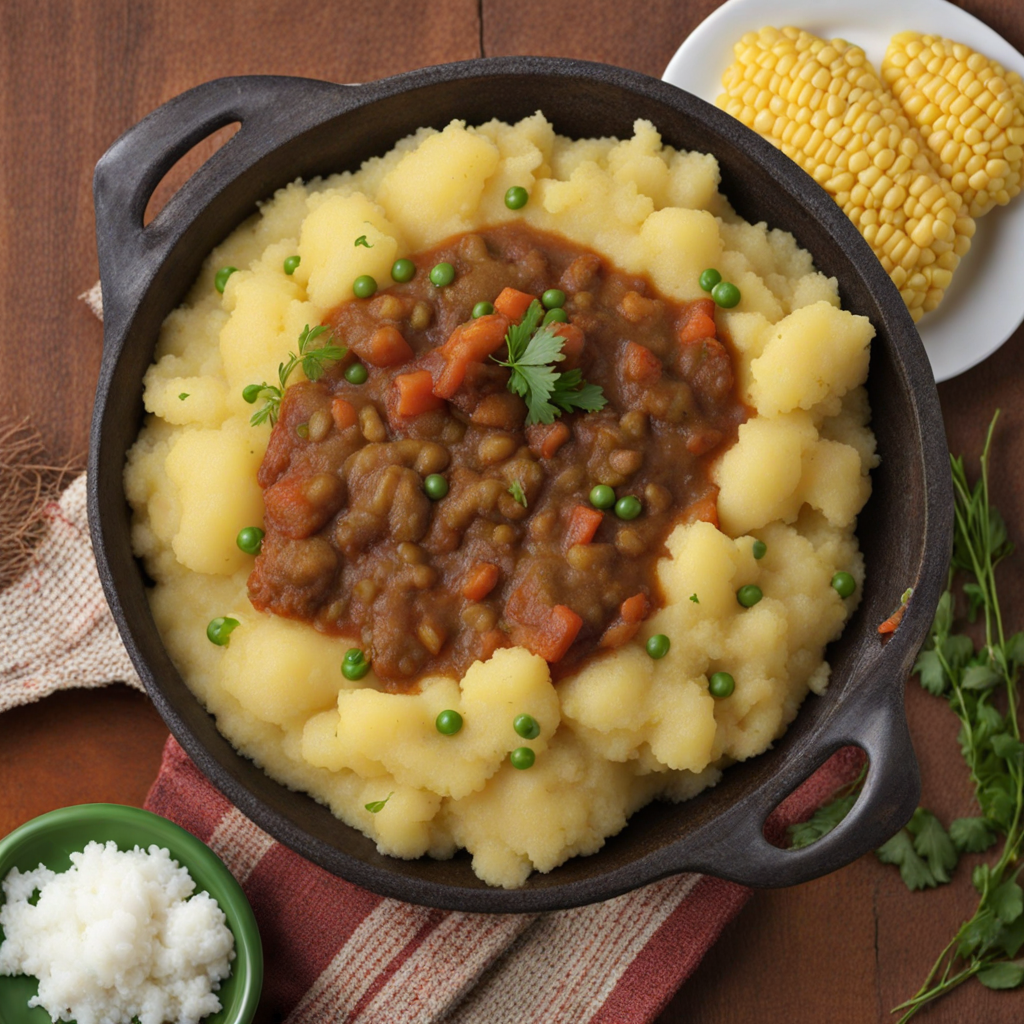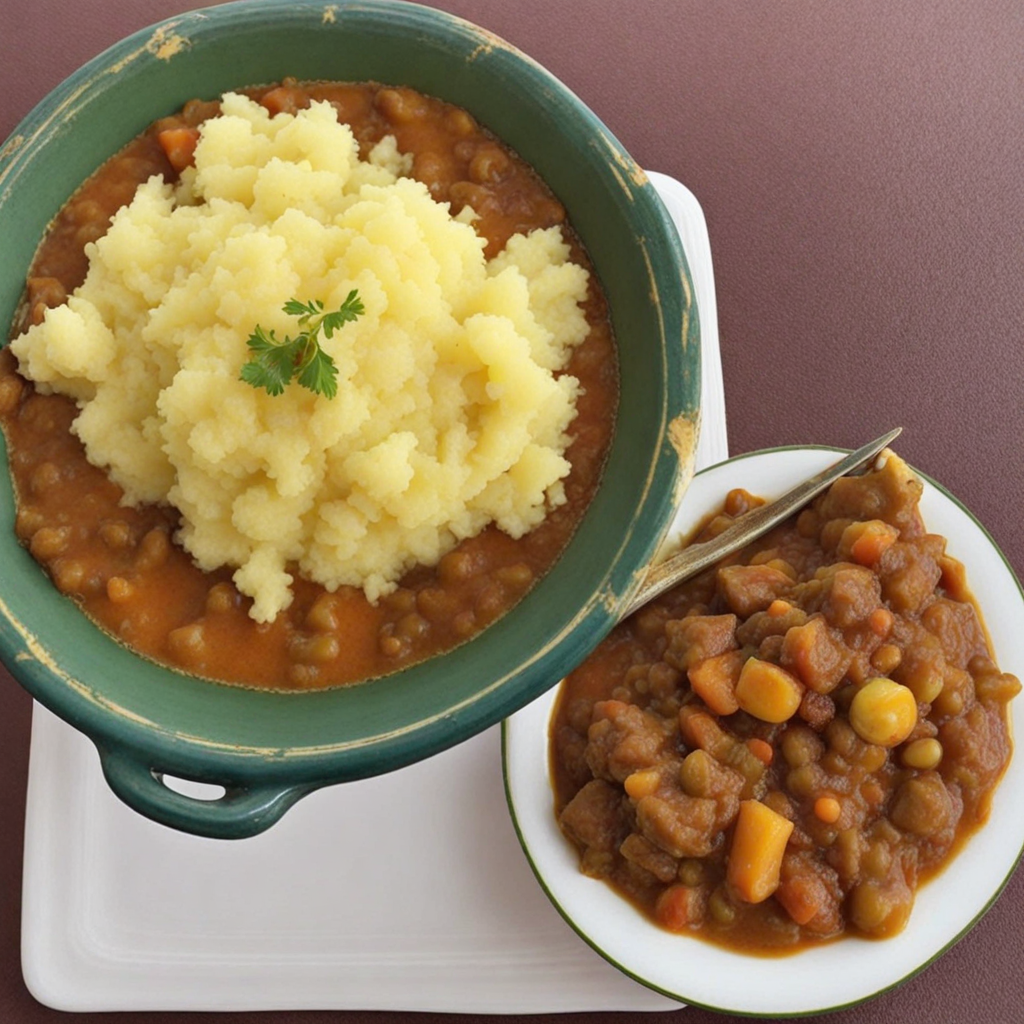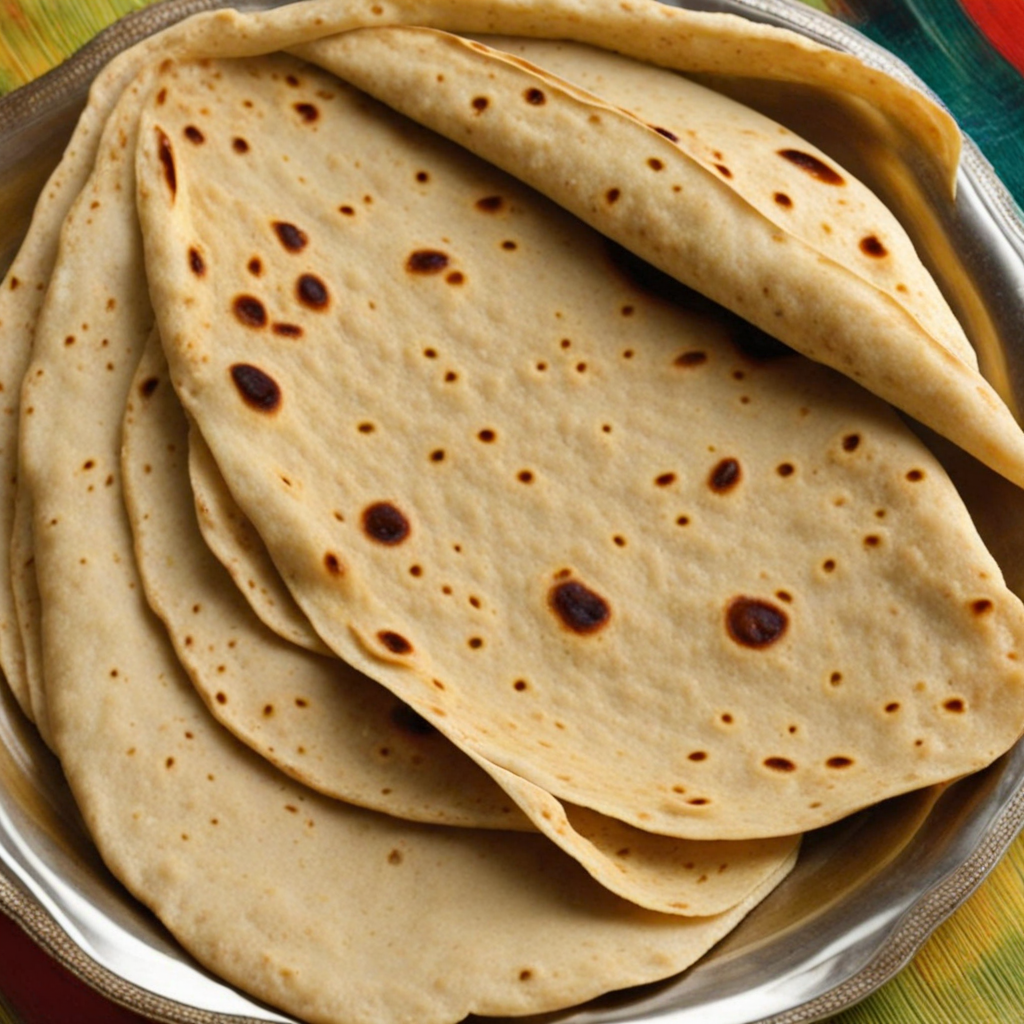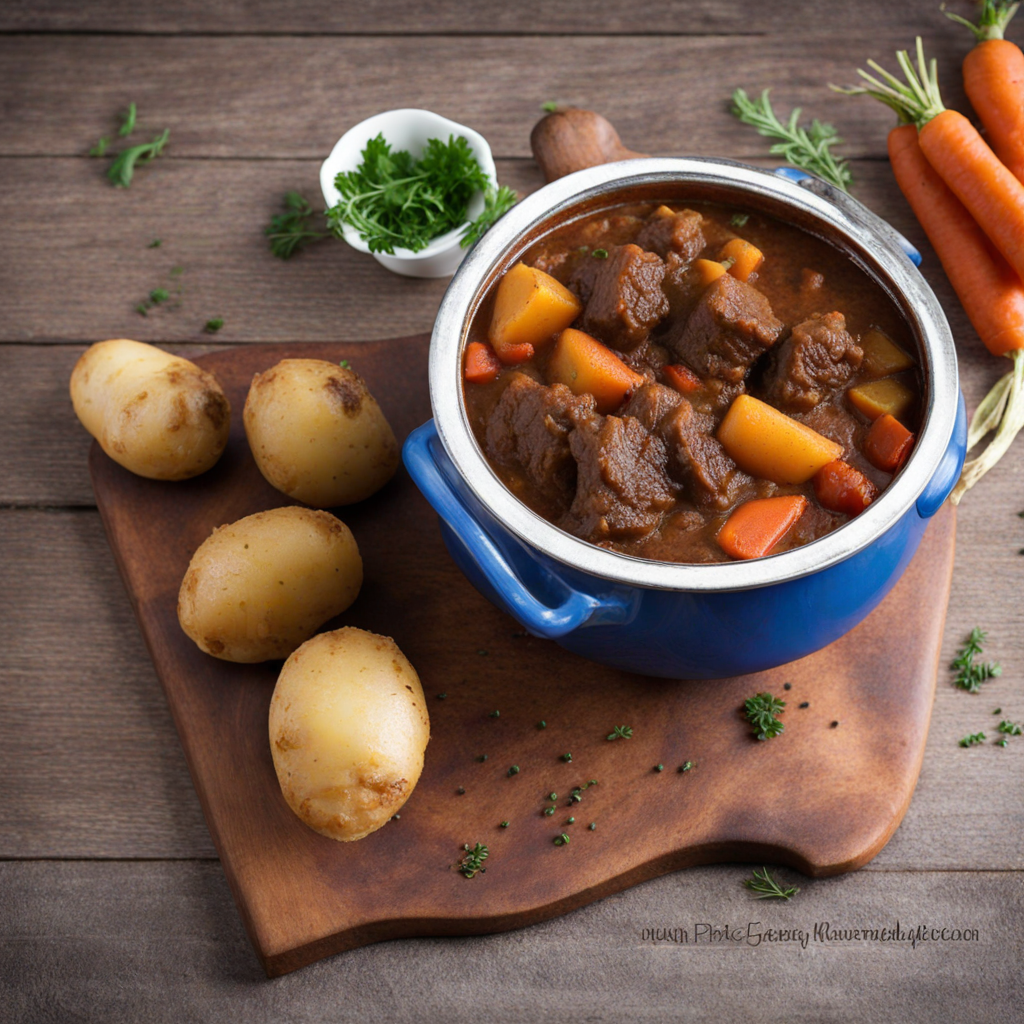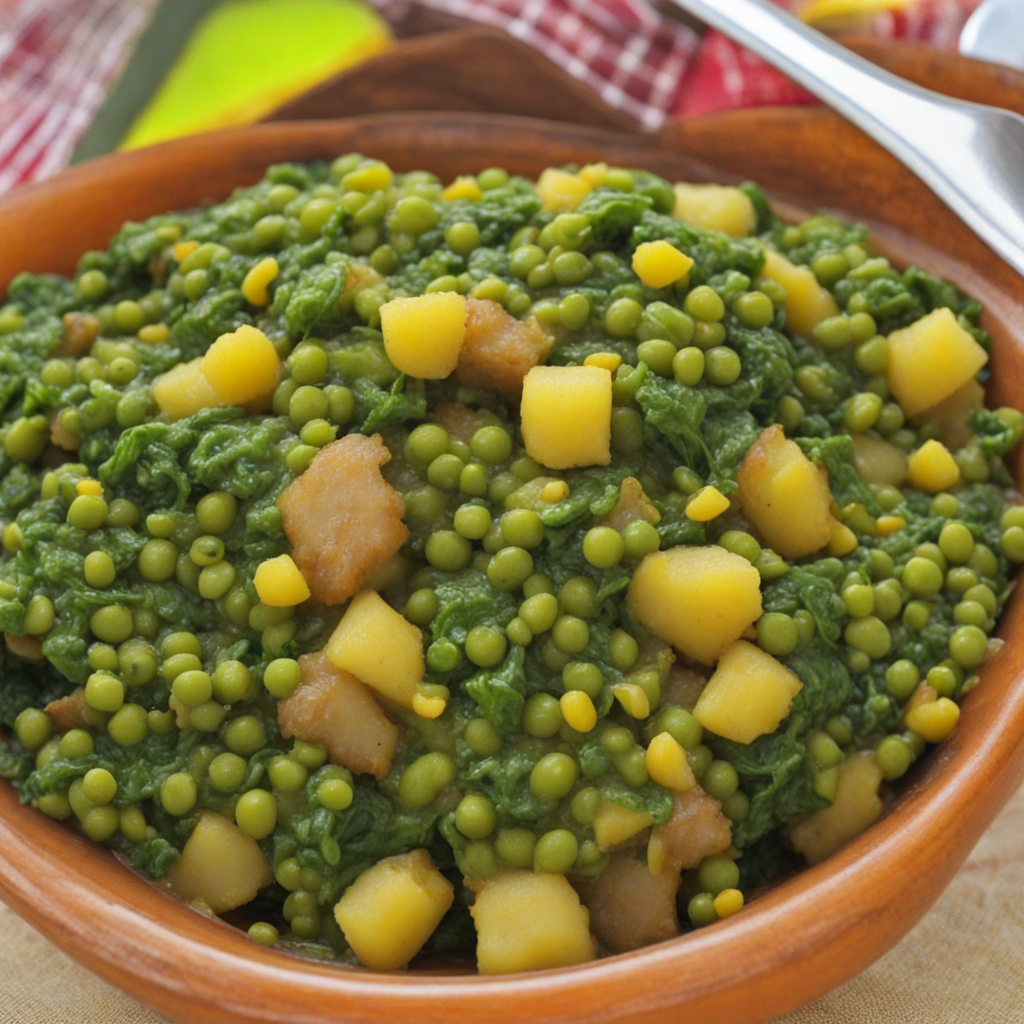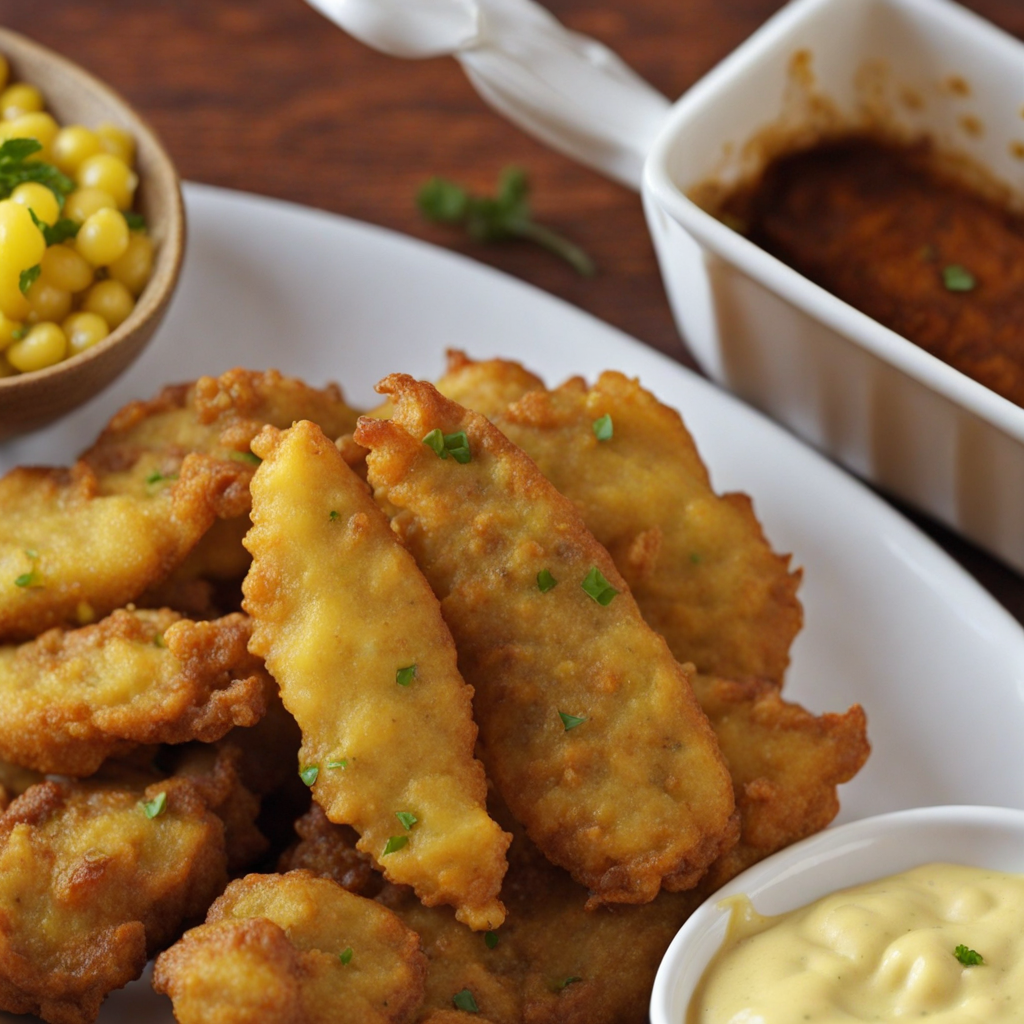Irio
Irio is a traditional Kenyan dish that beautifully showcases the country's rich agricultural heritage. At its core, Irio is a delightful mash made primarily from green peas, potatoes, and corn, which are combined to create a creamy, hearty side dish that’s both nutritious and flavorful. The vibrant green color of the peas, alongside the golden hue of the corn and the earthy tones of the potatoes, makes for a visually appealing plate, inviting you to dig in and experience its unique taste. The dish is often seasoned with a hint of salt and typically enhanced with a touch of butter, which adds a luxurious richness to the mix. The preparation of Irio is a labor of love, often involving the communal effort of family and friends in Kenyan homes, which reflects the spirit of togetherness in the culture. The ingredients are cooked until tender and then mashed together, creating a smooth yet textured consistency. Some variations may include the addition of fresh herbs like coriander or spices such as garlic and onions, which elevate the dish's flavor profile and introduce an aromatic element that tantalizes the senses. Irio is versatile and can be paired with a variety of main dishes, including grilled meats or stews, making it a staple accompaniment in many Kenyan meals. For those seeking to discover new tastes, Irio offers a delightful balance of sweetness from the corn, earthiness from the potatoes, and a fresh burst from the peas. It’s not just a dish; it’s an experience that connects you to the Kenyan way of life, celebrating the simple yet profound flavors of the land. Whether enjoyed at a festive gathering or as a comforting everyday meal, Irio stands out as a representation of Kenyan culinary tradition, inviting you to savor every bite and appreciate the wholesome ingredients that come together in this beloved dish.
How It Became This Dish
Origin of Irio Irio, a traditional dish from the Kikuyu people of Kenya, is a vibrant mash that primarily consists of mashed potatoes, peas, and corn. The origins of Irio can be traced back to the agricultural practices of the Kikuyu community, which has been primarily focused on subsistence farming. As one of the largest ethnic groups in Kenya, the Kikuyu relied heavily on crops like potatoes, maize, and beans, which were staples in their diet. The dish is said to have emerged during the early 20th century, coinciding with the introduction of new agricultural techniques and crop varieties brought about by colonial influences. While the Kikuyu people had been cultivating indigenous crops for generations, the introduction of these new crops allowed for greater culinary innovation. The combination of mashed potatoes with peas and corn created a nutritious and filling meal that could sustain families through the long days of labor in the fields. \n\n Cultural Significance Irio holds significant cultural importance among the Kikuyu people. It is not merely a food dish but a symbol of identity and community. Traditionally, Irio is often prepared for special occasions such as weddings, communal gatherings, and festivals. The preparation of Irio is a communal activity, where family members come together to prepare the ingredients, mash the potatoes, and mix in the peas and corn. This communal aspect reinforces social bonds and cultural traditions, as stories are shared and lessons are imparted from one generation to the next. In Kikuyu culture, the act of sharing food is an important ritual that signifies hospitality and unity. Serving Irio to guests is a way of honoring them, making it a staple at any gathering. It is also commonly accompanied by meat dishes, such as nyama choma (grilled meat), enhancing its nutritional value and making it a well-rounded meal. As such, Irio is not just a dish but a medium through which cultural practices and kinship are celebrated. \n\n Development Over Time Over the years, Irio has evolved, incorporating various regional and modern influences while maintaining its traditional essence. In urban settings, where the Kikuyu have migrated in search of better opportunities, Irio has adapted to include more diverse ingredients. This evolution reflects the changing lifestyles and tastes of the people, as well as the influence of globalization on Kenyan cuisine. In contemporary Kenya, Irio can be found in restaurants and homes alike, often served alongside a variety of meats and sauces that enhance its flavor profile. Some chefs have even experimented with the dish by adding other ingredients such as spinach, carrots, or even spices, creating a fusion of traditional and modern culinary practices. This adaptation is a testament to the resilience of cultural heritage in the face of change, showing how traditional foods can evolve while still retaining their core identity. \n\n Irio in a Global Context With the rise of global culinary trends, Irio has started to gain recognition beyond Kenya. As Kenyan cuisine becomes more popular on the international stage, Irio is often showcased as a dish that encapsulates the rich agricultural diversity and culinary heritage of the Kikuyu people. Food festivals, cultural events, and even cooking shows have introduced Irio to a wider audience, leading to a growing appreciation for its unique flavors and textures. The globalization of food has also opened doors for the incorporation of Irio into fusion dishes. Chefs around the world are experimenting with traditional recipes, creating modern interpretations that appeal to diverse palates. For instance, Irio can be served as a filling for burritos, blended into soups, or even turned into croquettes. This adaptability highlights the versatility of Irio as a dish that transcends cultural boundaries while celebrating its roots. \n\n Nutrition and Sustainability From a nutritional perspective, Irio is celebrated for its health benefits. The combination of potatoes, peas, and corn provides a balanced array of carbohydrates, proteins, and vitamins. This makes it an excellent choice for those seeking a hearty, wholesome meal. Additionally, the ingredients used in Irio are often locally sourced, promoting sustainable agricultural practices. The Kikuyu people have long understood the importance of maintaining a harmonious relationship with the land. By utilizing locally grown crops, they not only ensure the freshness of their food but also contribute to the local economy. This sustainable approach is increasingly relevant in today’s world, where there is a growing awareness of the environmental impact of food production and consumption. \n\n Irio’s Role in Contemporary Kenyan Society In modern Kenyan society, Irio continues to play an essential role in the cultural narrative of the Kikuyu people. It serves as a reminder of their agricultural heritage and the significance of community and family in their lives. As urbanization increases and lifestyles change, the preparation and consumption of Irio remain a cherished tradition that many families strive to uphold. Moreover, Irio has found its place in the broader narrative of Kenyan cuisine, which is characterized by its diversity and richness. The dish is often featured in national celebrations, food fairs, and cultural exhibitions, showcasing the importance of traditional foods in fostering national identity. As Kenyans navigate the complexities of modern life, Irio serves as a comforting link to their past, a source of nourishment, and a celebration of their cultural heritage. \n\n Conclusion In summary, Irio is much more than just a dish; it is a vibrant reflection of the Kikuyu people's history, culture, and resilience. Its journey from a traditional staple to a dish recognized globally illustrates the adaptability of cultural heritage in the face of change. As Irio continues to be prepared and enjoyed in homes and restaurants across Kenya and beyond, it stands as a testament to the enduring legacy of the Kikuyu people and their rich culinary traditions.
You may like
Discover local flavors from Kenya


